Literary rating: ★★
Kick-butt quotient: ☆
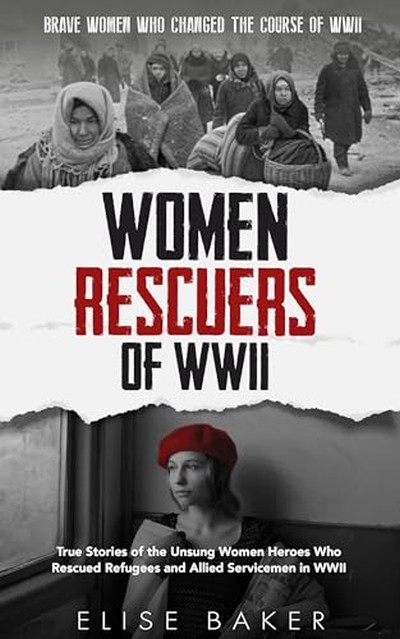 With the somewhat accurate and rather clunky sub-title of “True stories of the unsung women heroes who rescued refugees and Allied servicemen in WWII”, this is a book whose idea I liked rather more than the execution. The core is six chapters, each devoted to a woman or pair of women, who operated before and around World War II, mostly helping refugees to escape the Nazi regime as it swept across Europe. Every chapter has the same structure. Each begins with ‘The Threshold’, describing how they came to take on that role; then ‘The Move’, covering their heroic activities; and finally, ‘The Close’, detailing what happened to them afterward.
With the somewhat accurate and rather clunky sub-title of “True stories of the unsung women heroes who rescued refugees and Allied servicemen in WWII”, this is a book whose idea I liked rather more than the execution. The core is six chapters, each devoted to a woman or pair of women, who operated before and around World War II, mostly helping refugees to escape the Nazi regime as it swept across Europe. Every chapter has the same structure. Each begins with ‘The Threshold’, describing how they came to take on that role; then ‘The Move’, covering their heroic activities; and finally, ‘The Close’, detailing what happened to them afterward.
These stories are all worth telling, though perhaps not to the same degree. A couple appear more like glorified bureaucrats, and while their roles in facilitating emigration of refugees were important, you don’t get much sense they were in genuine danger. Others, however, such as Irena Sendler, was clearly risking her own life in smuggling Jewish children out of the Warsaw ghetto, being captured and brutally interrogated by the Gestapo. The same goes for Andrée de Jongh, who ran the Comet Line which allowed Allied soldiers trapped behind enemy lines in occupied Europe, to make their way back to friendly territory. She ended up in Ravensbruck concentration camp: that’s “real” heroism, putting yourself at personal risk, and definitely deserves to be better known.
However, the desire to cram in too much here works against the book. Each chapter typically covers only 20-25 pages, and as a result, you get not much more depth about each woman, than you would find in a well-written Wikipedia article. These are more like an appetizer, and you’ll probably be left hungry to know more about the likes of de Jongh. Baker has an odd tendency to shift from factual descriptions to what reads like dramatic restagings of scenes, an awkward shift that she does not manage to pull off. Rather than letting the stories speak for themselves, she tends to belabour her point about sexism being responsible for suppressing these stories.
It’s somewhat questionable, since many male heroes of WW2 are arguably more unsung: de Jongh, for example, was awarded decorations by multiple countries, including the George Medal, Britain’s highest civilian honour. That’s not “unsung.” I’d rather Baker had used the pages she spends on making such points, to tell the reader more about the women’s stories. I will admit, I did learn things here, and if you’re looking for a primer – a Cliff Notes on wartime heroism – this and the other books in the series are probably worth a look. But it feels like Baker is only skimming the surface, and the subjects would have been better served by a more in-depth recounting, rather than trying to cover so many different candidates. Sometimes, less is definitely more, and this would be a good example.
Author: Elise Baker
Publisher: Intrepidas Publishing, available through Amazon, both as a paperback and an e-book
Book Part of the Brave Women Who Changed the Course of WWII series.





 Subtitled, The Female Hero in Popular Cinema, 1970-2006, this is non-fiction, being a feminist – I guess, more post-feminist – analysis of action heroines over the time in question. It made for an interesting read, being considerably more dense than my typical reading material: Schubert seems to be aiming at an audience that already know what she means, with a good number of terms left unexplained in the text. Yet it was equally frustrating: for every section that had me nodding in agreement, there was one where I was at least raising an eyebrow, if not snorting derisively.Parts are incisive and smart. Others exemplify the worst excesses of ivory-tower academia.
Subtitled, The Female Hero in Popular Cinema, 1970-2006, this is non-fiction, being a feminist – I guess, more post-feminist – analysis of action heroines over the time in question. It made for an interesting read, being considerably more dense than my typical reading material: Schubert seems to be aiming at an audience that already know what she means, with a good number of terms left unexplained in the text. Yet it was equally frustrating: for every section that had me nodding in agreement, there was one where I was at least raising an eyebrow, if not snorting derisively.Parts are incisive and smart. Others exemplify the worst excesses of ivory-tower academia.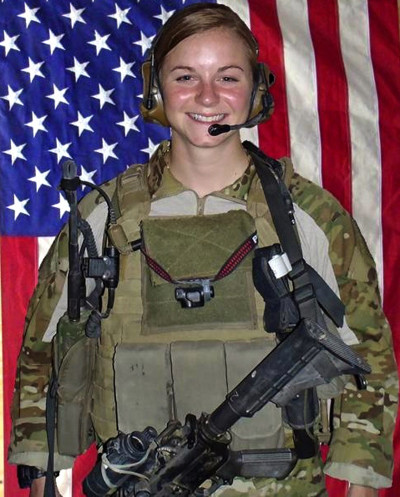
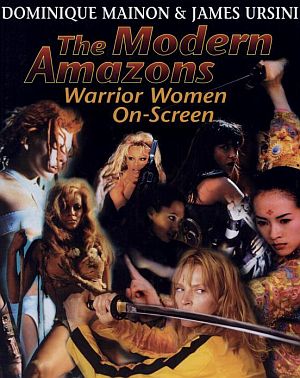 While it’s nice to see our favourite topic here getting some printed love, I can’t say I was impressed with this end result, which struggles to be all things to all women, and ends up not being very good at any of them. There’s no denying the breadth of coverage here, with everything from Sailor Moon to Ilsa getting covered – though they appear rather too willing to stretch the bounds of the term, “Amazons”. I mean: Pippi Longstocking? The coverage is grouped into various areas: monster killers, super-sleuths, fur bikinis, etc. along with additional essays on more specific themes, such as the representation of women as felines. It’s a somewhat lumpy distinction, which occasionally makes for strange bed-fellows, but occasionally comes up with some thought-provoking nuggets.
While it’s nice to see our favourite topic here getting some printed love, I can’t say I was impressed with this end result, which struggles to be all things to all women, and ends up not being very good at any of them. There’s no denying the breadth of coverage here, with everything from Sailor Moon to Ilsa getting covered – though they appear rather too willing to stretch the bounds of the term, “Amazons”. I mean: Pippi Longstocking? The coverage is grouped into various areas: monster killers, super-sleuths, fur bikinis, etc. along with additional essays on more specific themes, such as the representation of women as felines. It’s a somewhat lumpy distinction, which occasionally makes for strange bed-fellows, but occasionally comes up with some thought-provoking nuggets.
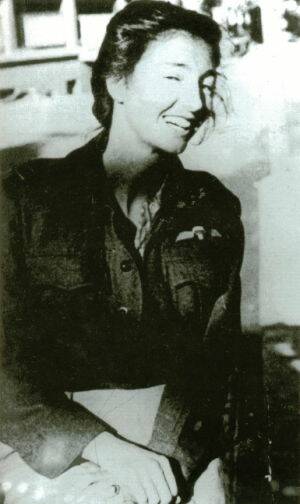 In World War II, the British SOE (Special Operations Executive) recruited and trained a number of women agents for insertion into occupied territory. There, they risked torture and execution, while carrying out missions of intelligence-gathering, subversion and sabotage. The exploits of some have received the recognition they deserve (such as Violette Szabo, who received both Britain’s George Cross and the French Croix de Guerre), but most seem to have slid through the cracks of time – Binney’s book is a solid and commendable effort to save at least a few from historical oblivion.
In World War II, the British SOE (Special Operations Executive) recruited and trained a number of women agents for insertion into occupied territory. There, they risked torture and execution, while carrying out missions of intelligence-gathering, subversion and sabotage. The exploits of some have received the recognition they deserve (such as Violette Szabo, who received both Britain’s George Cross and the French Croix de Guerre), but most seem to have slid through the cracks of time – Binney’s book is a solid and commendable effort to save at least a few from historical oblivion.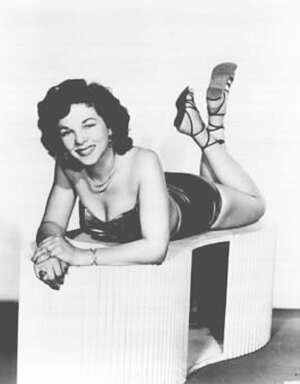 It’s ironic that this runs some 90 pages shorter than Chyna’s bio, given that Moolah had almost 50 years of experience before Chyna ever stepped into a ring, and also outlasted the Ninth Wonder, fighting a bout in 2002, on her eightieth birthday. Indeed, Moolah’s upbringing alone – the sole girl among 13 children, whose first marriage was at age fourteen – likely has enough material for a thick volume. Yet, despite wrestling in seven different decades, and multiple reigns as women’s champion over
It’s ironic that this runs some 90 pages shorter than Chyna’s bio, given that Moolah had almost 50 years of experience before Chyna ever stepped into a ring, and also outlasted the Ninth Wonder, fighting a bout in 2002, on her eightieth birthday. Indeed, Moolah’s upbringing alone – the sole girl among 13 children, whose first marriage was at age fourteen – likely has enough material for a thick volume. Yet, despite wrestling in seven different decades, and multiple reigns as women’s champion over 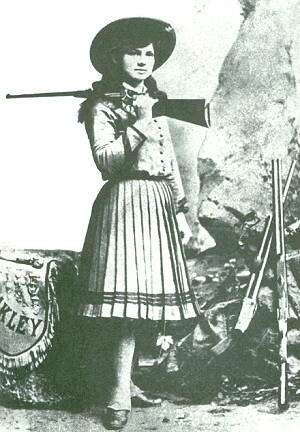 Annie Oakley was one of the earliest “girls with guns”. In her role as a sharpshooter, performing with the likes of Buffalo Bill’s Wild West show, she travelled the globe, appearing in front of Presidents, Kings and Emperors. She shot a cigarette held by the future Kaiser Wilhelm of Germany (accuracy later deplored by American newspapers, after the nations went to war in 1917). At 90 feet, she could shoot a dime tossed in midair, or hit the
Annie Oakley was one of the earliest “girls with guns”. In her role as a sharpshooter, performing with the likes of Buffalo Bill’s Wild West show, she travelled the globe, appearing in front of Presidents, Kings and Emperors. She shot a cigarette held by the future Kaiser Wilhelm of Germany (accuracy later deplored by American newspapers, after the nations went to war in 1917). At 90 feet, she could shoot a dime tossed in midair, or hit the  Back in the mid-19th century, the West African kingdom of Dahomey had a singular army, led not by men, but by women. Even now, the “Amazons” of Dahomey represent an almost unique fighting force, the only confirmed case in history where the best soldiers in a male-led society were female. Their origins date back to rules forbidding men from being in the royal palace after dusk, leaving women to act as palace guards. When King Gezo took the throne in 1818, he was so impressed by the loyalty of his female protectors that he made them his army’s elite. So they remained, as many as 8,000 of them, until wiped out at the century’s end by vastly better-armed French colonial troops. Even then, they commanded respect. “These young women were far and away the best men in the Dahomeyan army, and woman to man were quite a match for any of us” – and this wasn’t any regular French soldier writing, but a member of the elite Foreign Legion.
Back in the mid-19th century, the West African kingdom of Dahomey had a singular army, led not by men, but by women. Even now, the “Amazons” of Dahomey represent an almost unique fighting force, the only confirmed case in history where the best soldiers in a male-led society were female. Their origins date back to rules forbidding men from being in the royal palace after dusk, leaving women to act as palace guards. When King Gezo took the throne in 1818, he was so impressed by the loyalty of his female protectors that he made them his army’s elite. So they remained, as many as 8,000 of them, until wiped out at the century’s end by vastly better-armed French colonial troops. Even then, they commanded respect. “These young women were far and away the best men in the Dahomeyan army, and woman to man were quite a match for any of us” – and this wasn’t any regular French soldier writing, but a member of the elite Foreign Legion. This is probably the first WWF bio from a wrestler who never won the world title. Yet Chyna made her mark, largely through her abandoning the T&A of the women’s division, to take on the likes of Triple H and Stone Cold. This would seem to be an interesting angle, from which to report. So why is the result so goddamn…well, whiny? Part of the problem is that any wrestle-bio has to compete with the genius which was Mick Foley’s first book, Have a Nice Day – for insight and sheer good humour, it’s almost impossible to beat. Yet that doesn’t mean you shouldn’t bother trying. Chyna, on the other hand, runs out little more than a “woe is me!” tale about what a horrible life she had, all the way from her childhood, up until the WWF plucked her from obscurity to make her a star.
This is probably the first WWF bio from a wrestler who never won the world title. Yet Chyna made her mark, largely through her abandoning the T&A of the women’s division, to take on the likes of Triple H and Stone Cold. This would seem to be an interesting angle, from which to report. So why is the result so goddamn…well, whiny? Part of the problem is that any wrestle-bio has to compete with the genius which was Mick Foley’s first book, Have a Nice Day – for insight and sheer good humour, it’s almost impossible to beat. Yet that doesn’t mean you shouldn’t bother trying. Chyna, on the other hand, runs out little more than a “woe is me!” tale about what a horrible life she had, all the way from her childhood, up until the WWF plucked her from obscurity to make her a star. The above quote, from one essay in this collection of pieces on “violent women in the movies”, perhaps sums up its main problem. I cheerfully admit that my writing is skewed heavily towards the former point of view, but even so, too many of the authors here seem concerned with squeezing meanings out of films that were never intended to be there. This over-analytical approach results in the book swinging between thought-provoking and infuriating on almost every page.
The above quote, from one essay in this collection of pieces on “violent women in the movies”, perhaps sums up its main problem. I cheerfully admit that my writing is skewed heavily towards the former point of view, but even so, too many of the authors here seem concerned with squeezing meanings out of films that were never intended to be there. This over-analytical approach results in the book swinging between thought-provoking and infuriating on almost every page.